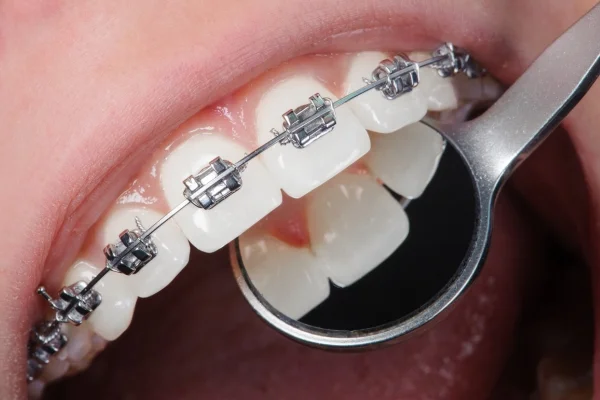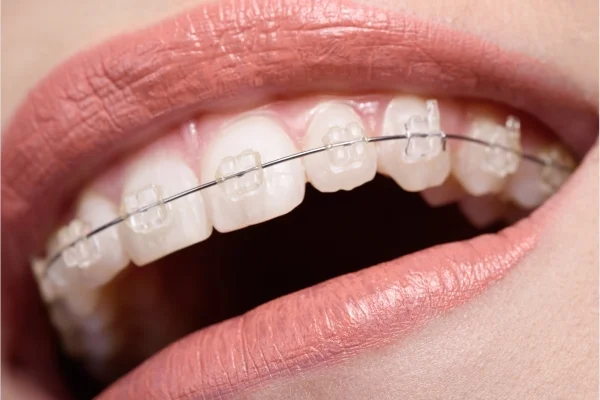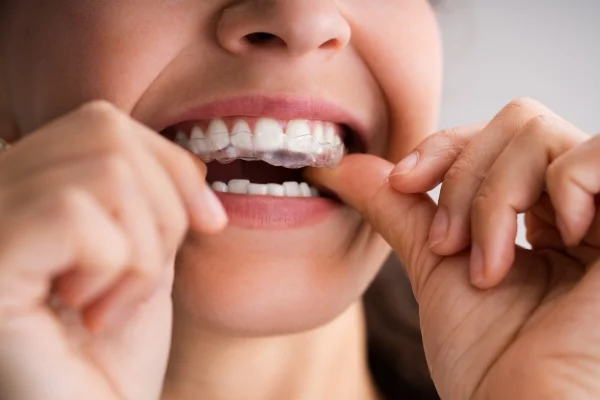Introduction: Why a Straight Smile Matters
We all know that a straight smile can do wonders for your confidence. It’s just one of those things that is amazing for one’s self-esteem. However, having straight teeth isn’t just about beauty, but more so a problem of the teeth. A number of issues including tooth decay, gum disease, and even jawache will most definitely develop when one has crooked or misaligned teeth.
Let’s talk about fixing your smile because there are more options than ever for where and how to get teeth straightening. Whether you are a teenager experiencing the awful phase of being overly conscious or if you are an adult who runs on a calculated schedule, we have options for everyone. That’s what this guide is all about.
Understanding the Different Teeth Straightening Options
There are several types of treatments available when it comes to straightening your teeth, Each one has its pros and cons, and what works best for you will depend on factors like how much your teeth need to be straightened, your budget, your age, and also how quickly you want to see results. Let’s take a closer look at the most common teeth straightening options available today.
Traditional Metal Braces

Let’s start with the classic: traditional metal braces. These are the most common among users when they are being referred to a teeth straightening treatment. This type of brace is among the oldest and is known to work well and deliver the results in all the intricate cases.
How They Work:
In metal braces both brackets and wires apply force on teeth to move them in a gradual process towards the right position. These brackets are glued or attached to the tooth and, the wires pass through these brackets. In roughly two or three weeks, the wires are tightened to apply pressure and force on the teeth in order to modify their position.
Pros:
- Effective for All Cases: Metal braces are great for straightening teeth, no matter how complex your case might be.
- Durable: They’re tough and can handle the pressure needed to move teeth effectively.
- Cost-Effective: Metal braces are usually the most affordable option for teeth straightening.
Cons:
- Visibility: Metal braces are very noticeable, which can be a downside for those who are self-conscious about their appearance.
- Discomfort: They can cause discomfort, especially after adjustments.
- Diet Restrictions: You’ll need to avoid certain foods that could damage the braces, like hard or sticky treats.
Clear Aligners
One of the most famous treatments these days is clear aligners. If you’re looking for a more transparent and secret way to straighten your teeth, clear aligners might be the perfect choice. There are different brands available and all of them have different price ranges.
How They Work:
Clear aligners are custom-made trays that fit snugly over your teeth. You’ll receive a series of trays that you’ll change out every couple of weeks. Each new tray is slightly different from the last, gradually shifting your teeth into place. The best part? They’re nearly invisible, so most people won’t even know you’re wearing them.
Pros:
- Discreet: They’re clear which is going to make them much less noticeable than metal braces.
- Removable: Maintaining them is easy because you can take them out to eat, brush, and floss.
- Comfortable: You won’t require metal brackets or wires which meas there will be less irritation to your mouth.
Cons:
- Discipline Required: You need to wear them for at least 20-22 hours a day for them to be effective, so they’re not the best option if you’re forgetful or don’t want to commit to wearing them consistently.
- Cost: Clear aligners can be more expensive than metal braces.
- Not Suitable for All Cases: They work best for mild to moderate alignment issues, so they might not be effective if your case is more complex.
Ceramic Braces

If you want something that works like metal braces, but they are not attractive, then ceramic braces might be a good solution for you. These are basically the same as the regular metal braces; however, the brackets that are in the ceramic material are translucent or the same color as the teeth.
How They Work:
Ceramic braces like metal braces apply pressure on your teeth to gradually move them through brackets and wires. The most significant distinction is the choice of brackets materials that does not seem as noticeable.
Pros:
- Less Noticeable: The ceramic material blends in with your teeth, making them less visible than metal braces.
- Effective: They work just as well as metal braces, even for complex cases.
Cons:
- Cost: Ceramic braces are more expensive than metal braces.
- Fragility: The ceramic material is more brittle than metal, so the brackets can break more easily.
- Staining: The brackets can stain if you’re not careful with your diet, particularly with foods and drinks that are known to stain teeth.
Choosing the Right Option for You
Since the different types of teeth straightening methods have been explained, it is now about time that you consider which of them you could benefit from most. The one that works best depends on factors such as how much money you have to spend, how much your teeth need to be realigned and which of the options suits your lifestyle.
For a complicated treatment and if cost is a concern metal braces remain a stable and economical option. They’re robust, fixed, and most are typically the cheapest models to boot.
Clear aligners, on the other hand, are better for people who want the treatment to be more discreet than the first option, but they will have to pay a little bit extra for it. Clear aligners are good for mild to moderate cases. Just remember that they demand compliance, you will need to use them regularly for them to be effective.
Ceramic braces are a good compromise when it comes to teeth straightening options: they are effective for the most complex cases and are sort of invisible. They are a better option if you have a middle level dental problem than the normal one and you don’t want metal braces on your teeth. However, remember that they are more costly than other types and take a little extra effort to maintain, especially to do away with stains and breakages.
Factors to Consider When Choosing a Teeth Straightening Option

When it comes to the price, do not forget about the extra charges such as follow-up appointments, retainers, and even more adjustments if needed. It is also important to know that some orthodontists have different flexible means of payment which can make costly appliances such as clear aligners or ceramics easier to attain.
Budget and Costs
Choosing between an orthodontist is one of the first things people think about when deciding on a teeth straightening option. It has been established that metal braces are the least expensive type, which, together with the prices fluctuating between $2000 to $6,000 depend on the degree of treatment and the region. They’re very useful and can easily solve even the most complicated alignment problems.
Invisible aligners include Invisalign clear aligners and are relatively expensive, with prices ranging from $3,000 to $7,000. They are ideal if you want something that you can have temporarily, and be easily taken off but may be off a little on the expensive side. Ceramic braces are in the middle, they go for approximately four to eight thousand dollars in cost. They provide both treatment and aesthetics; while they are not as discriminating as metal braces, they are affixed to your teeth.
Lifestyle and Convenience
Your decision will depend on your lifestyle, as some teeth straightening procedures might work better for you than others. Forexample, if you are a busy person who rarely has time to go see a dentist or doesn’t want any reminder of the correction process, clear aligners would be suitable for you. They are transparent and can be easily removed while eating or as part of a specific occasion or event, making them very convenient. However, one needs to wear them for 20-22 hours at least for these trays to work. So, they might not be perfect for those people who keep forgetting things.
Metal and ceramic braces are attached to your teeth permanently, so they don’t require placing them in and taking them out of your mouth. This can be a good thing if you don’t want to be reminded of treatment most of the time. Nevertheless, there are some limitations of fixed braces including avoiding the particular type of food that can harm the braces and observing a very keen hygiene to prevent plaque formation around the brackets.
Ceramic braces are not as noticeable as metal braces and they may be suitable if you’re conscious about your appearance. But they are also more delicate, and so the chances are high that you will easily break them or at least have to be very careful not to do so.
Aesthetic Considerations
Some people are more conscious of their appearance. Whenever aesthetics are concerned, clear aligners are always the preferred option since they are virtually undetectable. It makes them perfect for any person, who would like to have his or her teeth aligned but does not wish for others to notice that he or she is undergoing orthodontic treatment.
Ceramic braces are another good option. They come in the form of clear or tooth-colored brackets which enables them to blend with your natural teeth. But you’ll still need to be careful with what you eat and drink as the brackets could become stained.
Whereas ceramic braces are less noticeable and more aesthetic, metal braces are more functional and hygienic, which fits any case type. The main advantage of metal braces is that they are affordable and, if pleasing aesthetics is not a priority, they can provide the best orthodontic treatment.
What to Expect During Treatment

Once you’ve chosen the right teeth straightening option, it’s important to know what to expect during the treatment process. Understanding the journey ahead can help you prepare and make the experience as smooth as possible.
The Initial Consultation
The first thing you need to do is to receive an initial consultation with an orthodontist. At this consultation, the orthodontist will assess your teeth and go over some photographs and an X-ray to understand what you do and do not want done. It is now time to voice any queries you may have for the purpose of the many choices you have and what might most suit you. From this assessment, your orthodontist will then advise where and how will this treatment be done, how long it will take, and how much it will cost.
The Adjustment Period
Thus, it will not matter which treatment you decide to use since you will take some time to get used to the braces or the aligners. Some discomfort may be felt on metal and ceramic braces particularly after adjustments when teeth are being rearranged. This discomfort is normal and should go away after 48-72 hours. One can easily solve any irritation problems with the help of ordinary aspirin and orthodontic wax.
In other clear aligners, the adjustment period may take shorter time, yet every time that you transfer from the next set of aligners, you may feel pressure. This pressure is an indication that the aligners are trying to shift your teeth and is often temporary and only lasts for one or two days.
Regular Check-Ups and Progress Monitoring
During your treatment, you’ll have frequent follow-up appointments to review your case and react to any changes on your teeth. For traditional braces this might involve adjusting the wires thus getting into a tighter position or changing the elastics.
They are usually done on average at 4-8 week intervals depending on the specific treatment protocol of a patient. They’re very important to check whether your teeth are aligning properly and whether there are any other problems which needed to be solved. Failure to attend these appointments can only prolong your treatment, therefore it’s beneficial to attend these follow-ups.
Final Thoughts
Orthodont ic treatment is one of the treatments that will help you feel confident in your smile and receive a better prognosis of your oral health. It is therefore crucial to note that when it comes to metal braces, clear aligners or ceramic braces each comes with its own advantages and disadvantages. There are certain factors one should take into account to decide whether to wear those braces or not – First of all, the way you live, the amount of money you can spend, and whether you wish to have very conspicuous braces on your teeth. With either of the methods that you opt for, it is important that you make sure that you get regular check-ups and maintenance to guarantee the best outcomes. So, a straight smile is not only aesthetic, it is functional and means getting the smile that you have always wanted with straight healthy teeth for years.
FAQs
1. How long does teeth straightening usually take?
The duration varies depending on the method and the complexity of the case, but most treatments last between 12 to 24 months.
2. Are clear aligners as effective as braces?
Clear aligners are effective for mild to moderate cases, but traditional braces are usually recommended for more complex alignment issues.
3. Can adults get braces or clear aligners?
Yes, teeth straightening is effective at any age. Many adults choose clear aligners for their discreet appearance.
4. Will teeth straightening be painful?
You may experience some discomfort, especially after adjustments, but this typically subsides after a few days.
